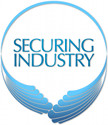 Over the last few decades, increasing globalization and supply chain complexity have posed risks to pharmaceutical safety, negatively impacting businesses and, most importantly, patients.
Over the last few decades, increasing globalization and supply chain complexity have posed risks to pharmaceutical safety, negatively impacting businesses and, most importantly, patients.
Today, 40 per cent of finished drugs and 80 per cent of active pharmaceutical ingredients (APIs) are imported into the US from more than 150 countries, totalling 24 million shipments per year from more than 300,000 foreign sites.
Recently implemented federal regulations – notably the Food and Drug Administration Safety and Innovation Act (FDASIA) and Drug Supply Chain Security Act (DSCSA) – aim to manage and secure the supply chain to protect patients from compromised medicines. But they also present challenges to pharmaceutical manufacturers, wholesalers and dispensers, due to lack of clear expectations and uniform system design, according to a report from Booz Allen Hamilton and the Pew Charitable Trusts.
By understanding key pharmaceutical supply chain risks and the regulations put in place to mitigate them, an organisation can identify the right security technology to protect itself and its assets.
Four primary risks
At any stage in the long, multi-faceted journey from raw source materials to finished products to consumers, products can be contaminated by four primary risks.
- Intentional adulteration is the purposeful contamination of a product in the manufacturing, storage or distribution process, or from ingredient substitution, for economic gain – and the impact of this risk is significant. The adulteration of heparin in China woke the industry to the massive impact that even one adulterated source can have, as it resulted in 574 cases that led to 68 deaths.
- Cargo theft produces an annual loss of $35bn in the US alone, and in 2013 the average loss per incident in pharmaceuticals due to cargo theft was $261,819, according to FreightWatch International.
- Counterfeiting is fraudulently mislabelling a product in identity or source and this risk was cited as a top challenge to product security in the latest UPS Pain in the Chain survey results, as counterfeiter sophistication evolves faster than countermeasures.
- Diversion of products from the intended authorized market to another also poses a significant risk to supply chain security. For example, a recent massive diversion scheme against the NY Medicaid program cost taxpayers $500M.
And of course, there are consequences of these risks, including drug recalls and adverse patient reactions up to death. In fact, the Pharmaceutical Security Institute (PSI) tracks incidents of pharmaceutical crime and saw a spike in 2013 to 2,193 incidents, an increase of 9.5 per cent over the last five years.
Pharmaceutical organizations can also incur daunting costs due to these risks, such as revenue loss, recall costs, legal costs for damage to health or life and regulatory fines.
Latest regulatory drivers
Regulatory focus is aimed at addressing risks throughout the whole pharmaceutical supply chain. Specifically, to address upstream risks from the supplier to the manufacturer, FDASIA expanded FDA authority across manufacturer registration, facility inspection and importation in 2012. It included provisions to, among other things, allow the FDA to refuse entry of an imported drug if the manufacturing facility inspection was denied or limited; enhance penalties for suppliers of counterfeit or substandard products; and require a unique manufacturing facility identifier for both domestic and foreign facilities.
DSCSA, also known as Title II of the Drug Quality and Security Act (DQSA), was signed into law in 2013 to address the downstream risks and will facilitate the exchange of information about where a drug has been in the supply chain, enabling verification of the legitimacy of the drug, enhancing detection of illegitimate products and facilitating more efficient recalls. The law requires the FDA to develop standards, guidance and programs to support efficient and effective implementation over a 10-year period.
Best practices
Proactive pharmaceutical supply chain security is built on actionable intelligence to protect a brand and its patients. By implementing an end-to-end security program that takes advantage of key advances in technology, an organization can mitigate risks while complying with the above federal regulations.
- Cloud-based services enable remote video audits to ensure compliance with operational and regulatory standards from anywhere, at any time from a variety of devices.
- Advanced truck security and control solutions with location sensors combined with an on-board system can detect trucks that are off route and remotely shut down a truck to prevent cargo theft.
- Physical Security Information Management (PSIM) solutions can automatically link disparate monitoring devices like video, access control and equipment sensors to minimize the risk of manual oversight and allow for real-time alerting.
Integrated technologies like these can correlate relevant information and incidents from multiple systems and apply corporate policy to enforce consistent actions across the organization, enabling corporate and regulatory compliance.
The bottom line
The pharmaceutical supply chain will continue to face challenges as market demands and federal regulations evolve. It’s important for pharmaceutical companies to collaborate with partners and peers, and engage in industry-wide associations to share ideas about supply chain complexities and security tactics.
Above all, organizations must work to understand the multiple threats to product integrity throughout the supply chain and utilize developing technology to arm their businesses to proactively address those threats to ultimately protect patient health.
Don Hsieh is director of commercial and industrial marketing for Tyco Integrated Security
©
SecuringIndustry.com




 Over the last few decades, increasing globalization and supply chain complexity have posed risks to pharmaceutical safety, negatively impacting businesses and, most importantly, patients.
Over the last few decades, increasing globalization and supply chain complexity have posed risks to pharmaceutical safety, negatively impacting businesses and, most importantly, patients.